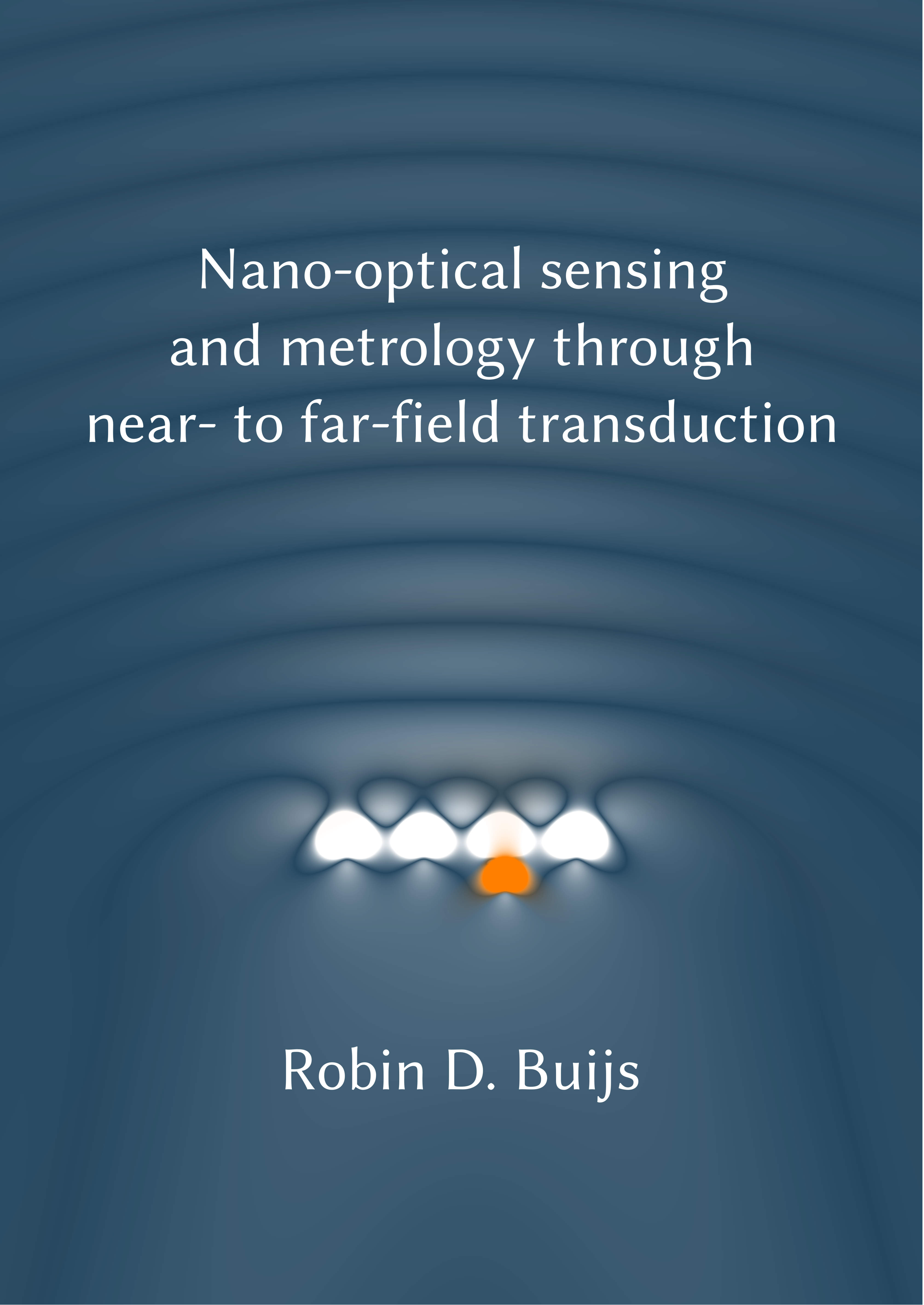Nano-optical sensing and metrology through near- to far-field transduction
Imaging of nanoscale structures with visible light is hindered by the diffraction limit, which prevents free-space focussing of light into dimensions smaller than a large fraction of its wavelength. Various superresolution techniques exist to circumvent these problems, each with their own drawbacks. In particular, high-resolution imaging of unlabelled samples is a tricky and slow process. In this thesis, we envision a sensing technique exploiting a metasurface patch introduced into the near-field of a sample. Near-field interactions then transduce nanoscopic spatial information into the far-field. We explore the capabilities and limitations of such a technique in terms of sensing and metrology performance.
First, we demonstrate localisation of point sources and scattering objects at deeply sub-diffractive resolutions (ch. 3, ch. 4). We next show that tailored illumination patterns can program complete bases of near-field energy distributions (ch. 5). Finally, we explore how multiplexing different polarisation channels may assist overlay measurement on nanophotonic scattering structures (ch. 6, ch. 7).
The results in this thesis suggest several interesting directions for information retrieval research and for sensors development. Sensors may be able to benefit from polarisation multiplexing or near-field programming. Quantitative analysis of the information content of different degrees of freedom may enable optimal sensing strategies. Pending technical implementation, metasurface-assisted near- to far-field transduction may prove a powerful technique for nano-optical sample inspection.



